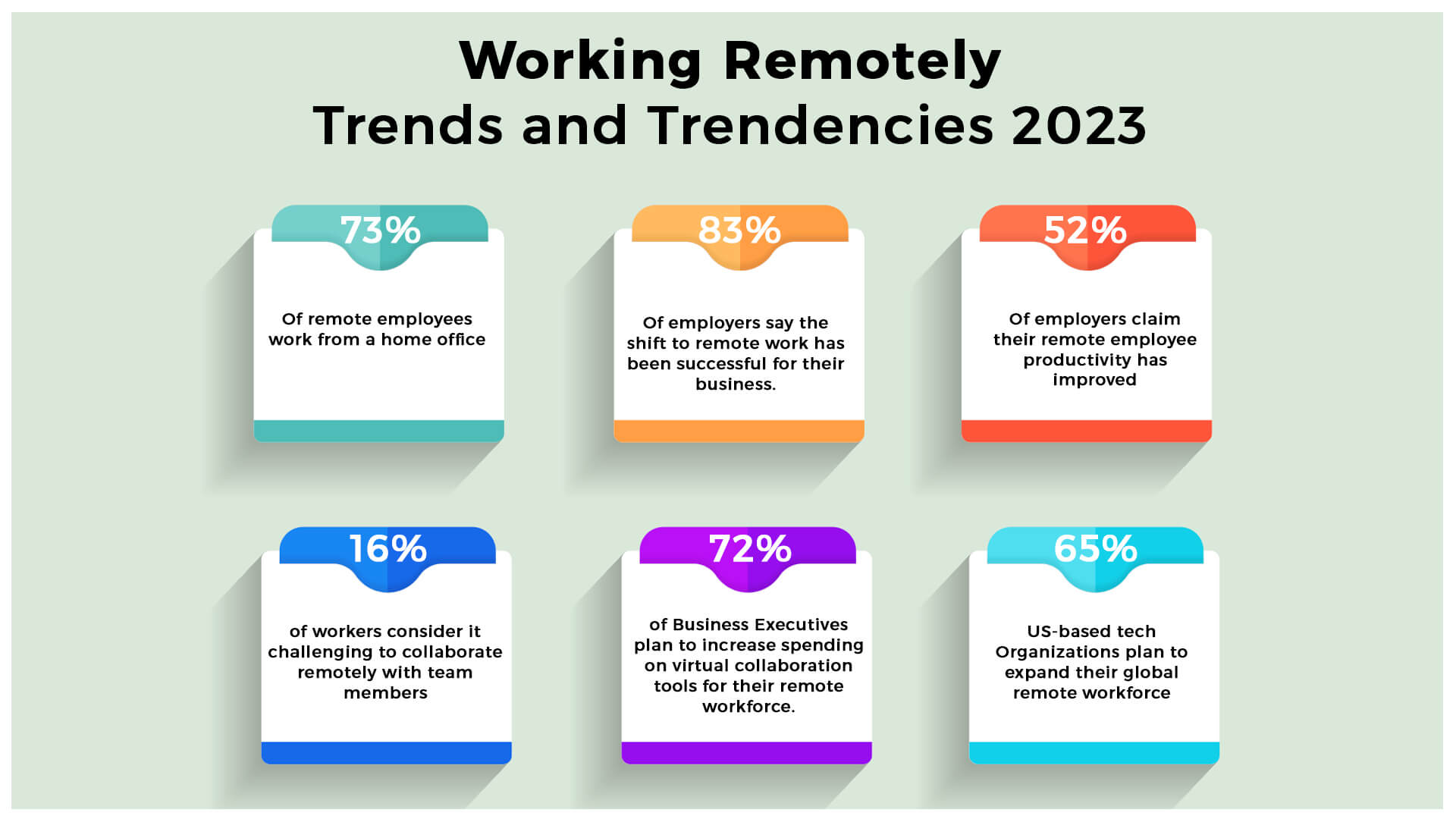
With the advent of technology, remote work has become more common than ever before. While it offers numerous benefits, remote work also poses unique challenges that must be addressed to ensure success. Building and managing a high-performing remote software development team requires a different approach than managing an on-site team. It requires careful planning, effective communication, and a well-thought-out strategy to ensure everyone is working towards the same goal.
In this piece, we will explore the best practices for building and handling a high-performance remote software development team. From setting clear expectations to fostering collaboration and ensuring team members have the necessary tools and resources, we will cover all the essential aspects of managing a remote software development team. Whether you’re a seasoned manager or new to managing a remote team, this blog will provide practical tips and strategies to help you build and manage a high-performing remote software development team. So, let’s get started!
Why is it vital for businesses to hire remote Software Developers?

Upwork states 73% of all departments are expected to have remote employees by 2028.
Recruiting remote developers has evolved into an increasingly widespread practice among businesses of all sizes, as evidenced by the above statistic. This trend will continue in the future. This is due to the numerous advantages of working with remote software developers. Here are several reasons for businesses to hire remote software developers:
1. Access to a larger talent pool
Hiring remote software developers offer firms access to a larger talent pool. Businesses that use remote work are not limited by geographical location and can source talent from any corner of the world. This increases the likelihood of finding developers with the required expertise and skills to meet the company’s needs.
2. Cost savings
Recruiting remote software developers can save capital over hiring on-site developers. This is because of the fact that businesses are not required to provide workspace or supplies, and remote developers may be eager to work for less money due to the autonomy and adaptability of remote work.
3. Increased productivity
Remote developers often report higher productivity levels due to the flexibility and autonomy of remote work. They can work in an environment that suits their needs and preferences, leading to increased motivation and focus. Additionally, remote developers can often work during hours that suit their schedules, increasing productivity and output.
4. Diversity and inclusivity
Hiring remote software developers allows businesses to tap into a more diverse and inclusive talent pool. By not being restricted by location, businesses can attract and hire developers from different backgrounds and cultures, bringing new perspectives and ideas to the team.
5. Scalability
Hiring remote software developers allows businesses to scale up or down their development team as needed quickly. This is particularly useful for businesses with fluctuating workloads or requiring specialized skills for specific projects.
Overall, hiring remote software developers can offer several benefits to businesses, including access to a larger talent pool, cost savings, increased productivity, diversity and inclusivity, and scalability. But, it’s important to have a clear strategy for managing remote teams to ensure success. So, let’s unveil how to hire remote software developers.
How to Hire a Team of Remote Developers?

Hiring a team of remote developers can be a great way to build a highly skilled and motivated team that can work from anywhere. However, hiring remote developers through a reputable firm can be a great option if you’re looking to build a skilled and motivated team that can work remotely from anywhere. However, it’s important to plan and execute carefully. To do so, follow these steps:
- Define Your Requirements:
Before seeking out a firm, ensure you know the skills you need, the scope of the project, and the timeline.
- Research Reputable Firms:
Look for firms specializing in remote developer recruitment with positive reviews, ratings, and feedback from other clients.
- Check the Firm’s Track Record:
Look into the firm’s success stories and case studies to ensure they have a good track record in recruiting remote developers.
- Schedule Interviews:
Once you’ve narrowed down your options, schedule interviews with the firms to learn about their recruitment process, screening criteria, and candidate selection.
- Evaluate the Candidates:
Evaluate the candidates recommended by the firm based on your requirements. You should conduct a technical assessment to evaluate their skills further.
- Onboard the Developers:
Once you have selected the developers, onboard them by setting up communication channels, providing access to the project management tools, and sharing the project’s objectives.
- Manage the Team:
Manage the team of remote developers by setting clear goals, monitoring progress, and providing feedback. Use collaboration tools to ensure effective communication and coordination.
Hiring a team of remote developers through a reputed firm requires careful planning, research, and evaluation. By following the steps mentioned above, you can ensure that you hire the best remote developers for your project.
Significant Concerns in Hiring a Remote Software Development Team
Managing a remote software development team comes with its own set of challenges. The lack of face-to-face interaction can make it harder to build trust, establish clear expectations, and ensure that everyone is working towards the same goal. Also, managing remote team members in different time zones or working on different schedules can make collaboration more difficult.
1. Excellent Time Management Techniques for Remote Software Developers!
Handling their work hours is one of the most difficult aspects of hiring a remote software development team.
Solution: You can solve this issue by stating each developer’s objectives and targets while offering tools such as project management software. Managers should also develop an efficient method of communication that promotes open dialogue among developers and periodic meetings to track progress.
2. Safeguarding Data in Remote Software Development
Data security breaches always exist when developing software remotely due to insufficient access controls or poor management.
Solution: When transmitting confidential data between parties, it is essential to employ authentication and encryption actions.
It’s also essential to have an effective tracking framework to identify potential data integrity issues and guarantee all employees comprehend their responsibility to safeguard confidential information.
3. Support Teamwork and Creativity in Remote Software Development Teams
Working with remote teams can make it more difficult to collaborate and be creative with the entire software development team.
Solution: Managers should foster cooperation by offering remote developers sufficient facilities such as video conferencing instruments, virtual whiteboards, and collaboration applications.
Managers should also schedule regular brainstorming sessions so the entire team can collaborate on innovative solutions.
How to Manage a Remote Software Development Team?
In the past few years, we can easily witness that remote work has gained massive popularity, and the COVID-19 pandemic added fuel to this trend. With the rise of digital technologies and the availability of high-speed internet, working from home or anywhere else in the world has become easier than ever before. This shift has created new business opportunities to build and manage remote teams, including software development teams.
However, managing a remote software development team comes with its own set of challenges. The lack of face-to-face interaction can make it harder to build trust, establish clear expectations, and ensure that everyone is working towards the same goal. Also, managing remote team members in different time zones or working on different schedules can make collaboration more difficult.

To build and handle a high-performance remote software development team, it’s essential to have a clear strategy in place. This involves setting expectations, establishing effective communication channels, and creating a culture of collaboration and accountability.
First and foremost, it’s important to establish clear expectations with team members. This includes setting goals and timelines, outlining specific responsibilities and deliverables, and establishing performance metrics to measure progress. By clearly defining expectations from the outset, team members can focus on achieving the desired outcomes.
Effective communication is also critical when managing a remote software development team. Regular check-ins, team meetings, and project status updates are essential to ensure everyone is on the same page. It’s also important to use technology to facilitate communication, such as video conferencing, chat tools, and project management software.
Collaboration is another key element of managing a remote software development team. Encouraging team members to share their ideas, providing opportunities for peer review, and establishing clear feedback mechanisms can help foster a culture of collaboration and continuous improvement.
Tips and Tricks for Remote Software Developer Productivity
You now understand why and how to hire remote software developers. But how do you keep them working? Here are some helpful hints:
Work with Time Zones

The ideal solution to this issue is to work on the “golden hours.” You and your remote software development team must work the same hours to complete their tasks.
For example, if you are in the UAE and your remote software development team is in India, the time difference could be two or three hours. As a result, you can plan your remote software development team’s work hours around yours. For instance, if you are in the USA and hire software developers from India, you can use different working hours to complete the tasks on time.
Build Specified Work Strategies

Building a specified framework for your remote software development team works as groundwork for successful oversight. Here are some key tips for building potent work strategies:
- Specify clear communication tracks: To ensure the team has several trails to communicate with one another, especially while remote working. Establish a video conferencing platform by using collaboration tools and an online forum for conversations associated with the project.
- Specifying expectations upfront: The remote software development team must possess precise instructions beforehand on their tasks and how they are foreseen to do them. It will aid them by eliminating miscommunication, perplexity, or anything similar.
- Deliver feedback often: By regularly reviewing progress with the number of members of your remote development team, you can easily catch issues before they become serious, causing delays in project timelines. Delivering frequent feedback fosters progress, allowing room for growth and improvement in individual skill sets.
- Split big projects into smaller pieces: Several large-scale projects are rough and problematic to manage, but breaking them into smaller chunks that should be completed on specified deadlines allows developers to stay focused and motivated rather than feeling swamped by too much at once
- Use the available resources: In addition to utilizing the specified platforms and tools, you can benefit from the available remote software development resources. Including podcasts, webinars, online courses, etc.
Enhance Communication
Periodic communication and feedback are critical in remote software development team management. However, overcoming communication hindrances in remote software development is not easy.
Moreover, here we have listed the ways to improve communication with remote software development teams:
Use the right communication tools: Select tools that suit your software development team’s requirements. Use video conferencing applications, collaboration software, and messaging apps to guarantee constant and effective communication.
Set up a communication plan: Establish guidelines and protocols for communication within the team to ensure everyone is on the same page. Establish scheduled meetings, such as daily standups and weekly team updates.
Encourage frequent check-ins: Ensure regular check-ins with your remote team and team members to ensure that they are progressing on schedule and that any roadblocks are identified and addressed in a timely manner.
Foster a collaborative environment: Develop a culture of trust and collaboration where people feel comfortable sharing their opinions and ideas. Encourage open communication channels to create a transparent working environment.
Address cultural differences: Be aware of differences that affect communication styles. Ensure that communication is respectful, inclusive, and culturally sensitive.
Utilize Automation: Utilizing automation for processes, bug tracking, code reviews, and deployment helps reduce time and allows you to concentrate more on managing people.
StrengthenTrust: Foster an environment of open communication between the remote software development team members by strengthening trust among their abilities and paying attention to the strengths of each other.
Utilize Tracking
![]()
It can be difficult to track what is going on with the project, what your team is working on, and how it is progressing. As a result, it is critical to investigate all critical productivity metrics to:
- Set practical goals and anticipations
- Evaluate progress at each step of the project
- Assure that the team is operating on priority tasks.
Here are some of the soundest tools and technologies for remote software development teams to improve productivity.
- Time Doctor: Time Doctor is a software application that helps businesses and employees manage their time more efficiently. It provides time tracking, employee monitoring, project management, and productivity analysis.
- Slack: Slack is a cloud-based messaging and collaboration tool for teams. It allows team members to communicate in real time through channels, direct messages, and video calls.
- Asana: This popular software development management tool allows teams to assign tasks to individuals or groups and then track progress on those tasks until they are completed successfully.
- Basecamp: Reliable web-based project management system that allows teams to collaborate more effectively when working remotely by tracking project progress from beginning to end and keeping everyone informed about what’s happening at every step.
- Trello: Trello offers an intuitive card-based interface that makes organizing ideas easy for distributed teams who need creative ways of managing multiple projects simultaneously.
Stay Competent
When hiring a remote development team, it is essential to stay transparent.
Here are some reasons:
Establishing Trust: Being transparent helps establish trust and sets the tone for open communication between the employer and the remote team. It can help alleviate any ambiguity or misunderstandings that may arise.
Clear Expectations: Transparency can help set clear expectations for both parties, including project objectives, timelines, milestones, etc.
Ensures Quality Work: By providing clear guidelines and expectations to the remote team, you can ensure that work is delivered to the highest quality standards.
Avoids Miscommunication: Ambiguity in communication can lead to poor outcomes. Transparency can avoid any miscommunication issues and streamline the process.
Encourages Innovation: A transparent hiring process allows remote team members to be innovative and bring in new ideas, which can hone your project’s creativity.
Remembering the above points while hiring your remote development team can ensure a smoother, more productive process.
Hire Competent Software Developers
A remote development team can save companies money on office space, equipment, and employee benefits. However, finding competent software developers willing to work remotely may be more difficult, and hiring remote employees from any random location can negatively impact your project in the long run.
To ensure you hire competent software developers for your remote development team, you should use a rigorous interview process that tests technical skills, communication abilities, and remote work expertise. You can also ask for references from past clients or employers.
Consider using third-party platforms like Upwork, Toptal, or Dribbble to find remote software developers. These sites are equipped with their vetting processes and can help you connect with experienced workers.
In addition to hiring experienced software developers, it’s important to provide adequate support and training to ensure success in a remote environment. Provide clear communication channels, set expectations, and establish a system of accountability to keep your team on track.
Lastly, because remote work can be a challenge, prioritize hiring developers from a company with a strong portfolio in offering software development services will be the best alternative.
Final Thoughts:
Finally, providing team members with the necessary tools and resources to do their job is essential for building a high-performance remote software development team. This includes access to high-speed internet, software development tools, and other necessary resources to complete their work effectively.
In conclusion, building and handling a high-performance remote software development team requires a well-planned strategy that addresses the unique challenges of remote work. You can build a team that delivers high-quality results regardless of physical location by setting clear expectations, establishing effective communication channels, fostering collaboration, and providing the necessary tools and resources.




